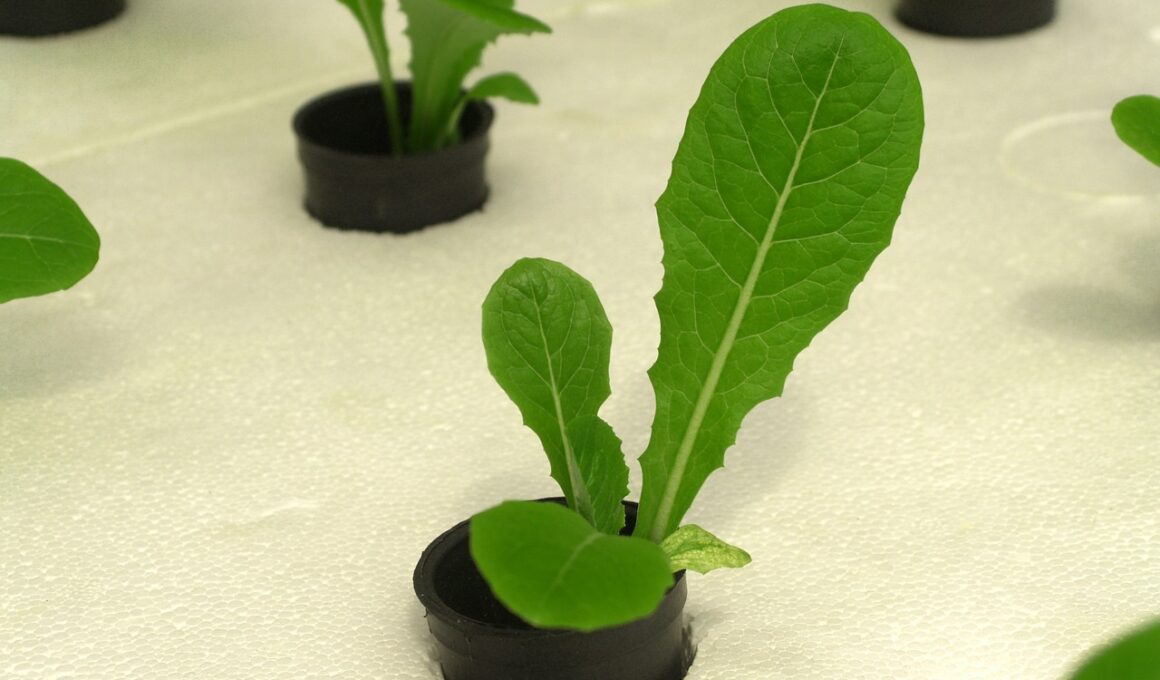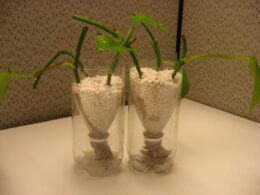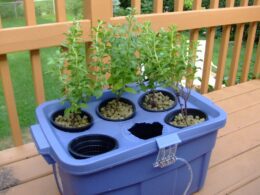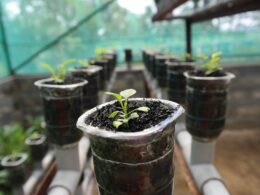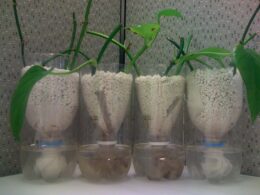Are you new to hydroponic gardening and wondering how often you should change your solution? Or maybe you’re an experienced grower looking to optimize your yields. Whatever your level of expertise, it’s important to understand the importance of changing your hydroponic solution.
Your hydroponic solution is the lifeblood of your garden, providing your plants with the essential nutrients they need to grow and thrive. But over time, this solution can become depleted or contaminated, leading to stunted growth, disease, and poor yields.
By regularly changing your solution, you can ensure that your plants have access to the nutrients they need to flourish, while also promoting a healthy and productive growing environment.
So, let’s dive into the factors that affect how often you should change your hydroponic solution and how to recognize when it’s time for a change.
Understand the Importance of Changing Your Hydroponic Solution
If you want your hydroponic plants to thrive, it’s crucial to regularly refresh the water in your system. Hydroponic systems provide many benefits, such as greater control over plant growth and faster growth rates. However, these benefits can only be realized if you take proper care of your system.
One of the most important aspects of this care is changing your hydroponic solution. Choosing the right type of hydroponic solution is important, but so is changing it on a regular basis. Over time, your solution can become depleted of essential nutrients that your plants need to grow. Additionally, harmful bacteria can start to grow in the solution, which can damage your plants and even make you sick.
Changing your solution on a regular basis helps to prevent these issues and keep your plants healthy. So, how often should you change your hydroponic solution? The answer depends on a variety of factors, such as the type of system you have, the size of your plants, and the quality of your water.
As a general rule, it’s a good idea to change your solution every 2-3 weeks. However, you should also monitor your plants closely and adjust your schedule accordingly. By taking the time to properly care for your system, you can ensure that your hydroponic plants will thrive and provide you with a bountiful harvest.
Factors That Affect How Often You Should Change Your Hydroponic Solution
Understanding the various factors that impact your hydroponic system can help maximize growth and ensure the health of your plants. One of the most important factors to consider is nutrient depletion. As your plants grow, they absorb nutrients from the hydroponic solution. Over time, the solution becomes depleted, which can lead to stunted growth or even death of your plants.
Another factor to consider is water hardness. If your water source is hard, it can contain high levels of minerals that can accumulate in your hydroponic system. This can cause pH imbalances and other problems that can harm your plants. It’s important to test your water regularly and adjust it as needed to ensure the health of your plants.
When it comes to changing your hydroponic solution, there are two main options: DIY nutrient solutions and pre-mixed nutrient solutions. DIY solutions can be customized to meet the specific needs of your plants, but they require more time and effort to prepare. Pre-mixed solutions are more convenient, but they may not provide the same level of customization.
Ultimately, the frequency at which you change your hydroponic solution will depend on the specific needs of your plants and the factors affecting your system. By staying vigilant and adjusting your system as needed, you can ensure the health and success of your hydroponic garden.
Signs That It’s Time to Change Your Hydroponic Solution
You need to pay attention to your hydroponic solution and change it regularly to keep your plants healthy.
Here are three signs that it’s time to change your solution:
-
First, check the pH levels regularly, and if they’re consistently off, it’s time to replace the solution.
-
Second, if you see algae growth in your system, it’s time for a change.
-
Finally, if you notice a foul odor coming from your solution, it’s a clear sign that it’s time for a fresh batch.
Make sure to stay on top of your hydroponic solution to ensure the best possible growth for your plants.
pH Levels
Maintaining the perfect pH levels in your hydroponic setup is crucial for the health and success of your plants. pH level monitoring is an essential task that you should do regularly to ensure that your plants are thriving.
Here are some things you need to know about pH levels in hydroponics:
- Your plants need a pH level between 5.5 and 6.5 to absorb nutrients effectively.
- pH levels that are too high or too low can lead to nutrient lockout, which means that your plants cannot take in the nutrients they need to grow.
- To optimize nutrient balance, you need to adjust the pH level of your hydroponic solution using pH up or pH down solutions.
Remember that maintaining proper pH levels is just one of the many factors that you need to consider when growing plants hydroponically. By paying attention to your plants’ needs and providing them with the right conditions, you can ensure that they thrive and produce a bountiful harvest.
Algae Growth
Algae growth can be a common issue in hydroponic setups, so it’s important to take preventative measures. Algae is a type of aquatic plant that can thrive in nutrient-rich environments, such as hydroponic solutions. While some algae is harmless, excessive growth can cause problems such as clogged pumps, reduced oxygen levels, and nutrient deficiencies for your plants.
To prevent algae growth, there are several measures you can take. First, make sure to properly sterilize all equipment before use. This includes containers, tubing, and any other materials that will come into contact with your hydroponic solution. Additionally, consider using a UV sterilizer or adding a hydrogen peroxide solution to your system. Finally, be mindful of nutrient deficiencies in your solution, as excess nutrients can promote algae growth. By taking these preventative measures, you can ensure a healthy and algae-free hydroponic setup.
| Algae Prevention Tips | Pros | Cons | ||||
|---|---|---|---|---|---|---|
| Properly sterilize equipment | Effective at preventing algae growth | Can be time-consuming | ||||
| Use a UV sterilizer | Efficient and kills other harmful organisms as well | Expensive | ||||
| Add hydrogen peroxide solution | Effective at controlling algae growth | Can damage plant roots at high concentrations | Regularly clean and maintain the aquarium | Prevents buildup of debris and nutrients that can fuel algae growth | Requires consistent effort and time commitment |
Foul Odors
If foul odors are present in your hydroponic setup, it may be a sign of a lack of oxygen or an overgrowth of harmful bacteria. These bacteria can cause root rot, which can ultimately lead to plant death.
It’s important to eliminate the bacteria as soon as possible to prevent further damage to your plants. To prevent foul odors and bacteria overgrowth, it’s important to change your hydroponic solution regularly.
It’s recommended to change the solution every 1-2 weeks to maintain the proper nutrient levels and oxygenation for your plants. You can also add an oxygenating agent to your solution to increase the oxygen levels and prevent harmful bacteria growth.
By taking these steps to prevent foul odors and bacteria growth, you can ensure the health and longevity of your hydroponic plants.
Tips for Maintaining a Healthy and Productive Hydroponic Garden
Keeping your hydroponic garden healthy and productive is easy with these helpful tips! First and foremost, it’s important to monitor your nutrient solution regularly. This will help you determine when it’s time to change it.
If you notice a decrease in yields or nutrient deficiencies, it may be time to change your solution. In addition to monitoring your nutrient solution, it’s also important to keep your system clean. This means regularly cleaning your equipment and growing medium, as well as sterilizing any tools you use.
This will help prevent the buildup of harmful bacteria and fungi that can harm your plants and reduce yields. Finally, it’s important to maintain the proper pH level for your plants. Different plants thrive in different pH levels, so it’s important to research the optimal range for your specific crops.
By keeping your nutrient solution clean, monitoring it regularly, and maintaining the proper pH level, you can ensure a healthy and productive hydroponic garden.
Conclusion: The Importance of Regularly Changing Your Hydroponic Solution
Make sure to give your plants the best chance at thriving in your hydroponic garden by maintaining a healthy nutrient solution and changing it regularly. Here are some benefits of nutrient solution replenishment and the effects of stagnant solution buildup that you should keep in mind:
-
Regularly changing your hydroponic solution ensures that your plants receive the proper nutrients to grow and flourish. Over time, the nutrient levels in your solution can become depleted or imbalanced, leading to stunted growth or even plant death.
-
Stagnant solution buildup can also lead to an overgrowth of harmful bacteria and pathogens, which can negatively impact the health of your plants. This buildup can also cause pH imbalances and salt buildup, which can further harm your plants.
-
By changing your hydroponic solution regularly, you can avoid these negative effects and maintain a healthy and productive garden. Aim to change your solution every two to three weeks, depending on the size of your system and the needs of your plants.
-
Remember to properly dispose of your old solution and clean your reservoir before adding fresh solution. With regular maintenance and solution changes, you can ensure that your hydroponic garden remains healthy and thriving.
Frequently Asked Questions
What type of water should I use in my hydroponic system?
When it comes to using water in your hydroponic system, it’s important to consider the pH balance and nutrient absorption. The pH of your water should be around 5.5-6.5 for most plants to properly absorb nutrients. You can adjust the pH with additives like pH up or pH down.
As for the type of water, it’s recommended to use filtered or distilled water to avoid any impurities that can harm your plants. Remember that changing the water in your hydroponic system is crucial to maintaining healthy plants, but it ultimately depends on the type of system and plants you have.
Keep an eye on the water’s color and smell, and if it starts to look murky or smell foul, it’s time to change it. By using the right water and monitoring your system regularly, you can ensure your plants are getting the nutrients they need to thrive.
Can I reuse my old hydroponic solution after changing it?
If you’re wondering whether you can reuse your old hydroponic solution after changing it, the answer is no. While it may seem like a waste to throw it away, reusing the old solution could lead to plant damage and nutrient deficiencies.
Benefits of using a fresh solution include better plant growth, healthier roots, and reduced risk of disease. Plus, changing your solution regularly (usually every 2-3 weeks) ensures that your plants are getting the right balance of nutrients they need to thrive.
So, while it may be tempting to try to save money by reusing old solution, it’s best to start fresh each time for optimal plant health and safety.
How do I dispose of my old hydroponic solution?
Proper disposal of your old hydroponic solution is important for the environment. There are eco-friendly alternatives to simply pouring it down the drain.
One option is to use it to water your outdoor plants or garden. If you can’t use it for this purpose, contact your local waste management facility to find out about proper disposal methods in your area.
Pouring it down the drain can harm aquatic life and pollute water sources. Make sure to handle the solution carefully and dispose of it properly to protect the environment and ensure the safety of those around you.
What types of nutrients should I add to my hydroponic solution?
When it comes to hydroponic systems, nutrient mixing is crucial for healthy plant growth. Best practices for nutrient mixing in hydroponics include using high-quality water and choosing nutrients that are specifically designed for hydroponic use. It’s important to monitor the pH of your hydroponic solution regularly, as pH imbalances can lead to nutrient deficiencies and stunted growth.
Maintaining the correct pH level for your plants will help ensure that they receive the proper nutrients they need to thrive. Overall, proper nutrient mixing and pH monitoring are essential for successful hydroponic gardening.
How often should I clean my hydroponic system?
To keep your hydroponic system running smoothly, it’s important to maintain it regularly. Cleaning frequency is crucial to ensure that your plants stay healthy and free from harmful bacteria.
You should clean your system at least once a month, but depending on the size of your setup and the number of plants you have, you may need to clean it more frequently. Equipment maintenance is also important to keep your system functioning properly.
Check your pumps, filters, and other components regularly and replace any parts that are worn or damaged. By taking care of your hydroponic system, you can ensure a safe and healthy environment for your plants to grow.
Conclusion
So, you’ve learned the importance of changing your hydroponic solution. Now, how often should you do it?
It depends on a few factors, such as the size of your system, the type of plants you’re growing, and the quality of your water. But don’t worry, there are some signs that can indicate it’s time for a change, such as pH imbalance, nutrient deficiencies, and algae growth.
To maintain a healthy and productive hydroponic garden, it’s crucial to keep an eye on your solution and make adjustments as needed. By testing your water regularly, monitoring your plants’ growth and health, and following a maintenance schedule, you can prevent issues and ensure optimal results.
Remember, a healthy hydroponic system starts with clean water, so don’t neglect this crucial step. Change your solution as needed, and your plants will thank you with bountiful harvests.





